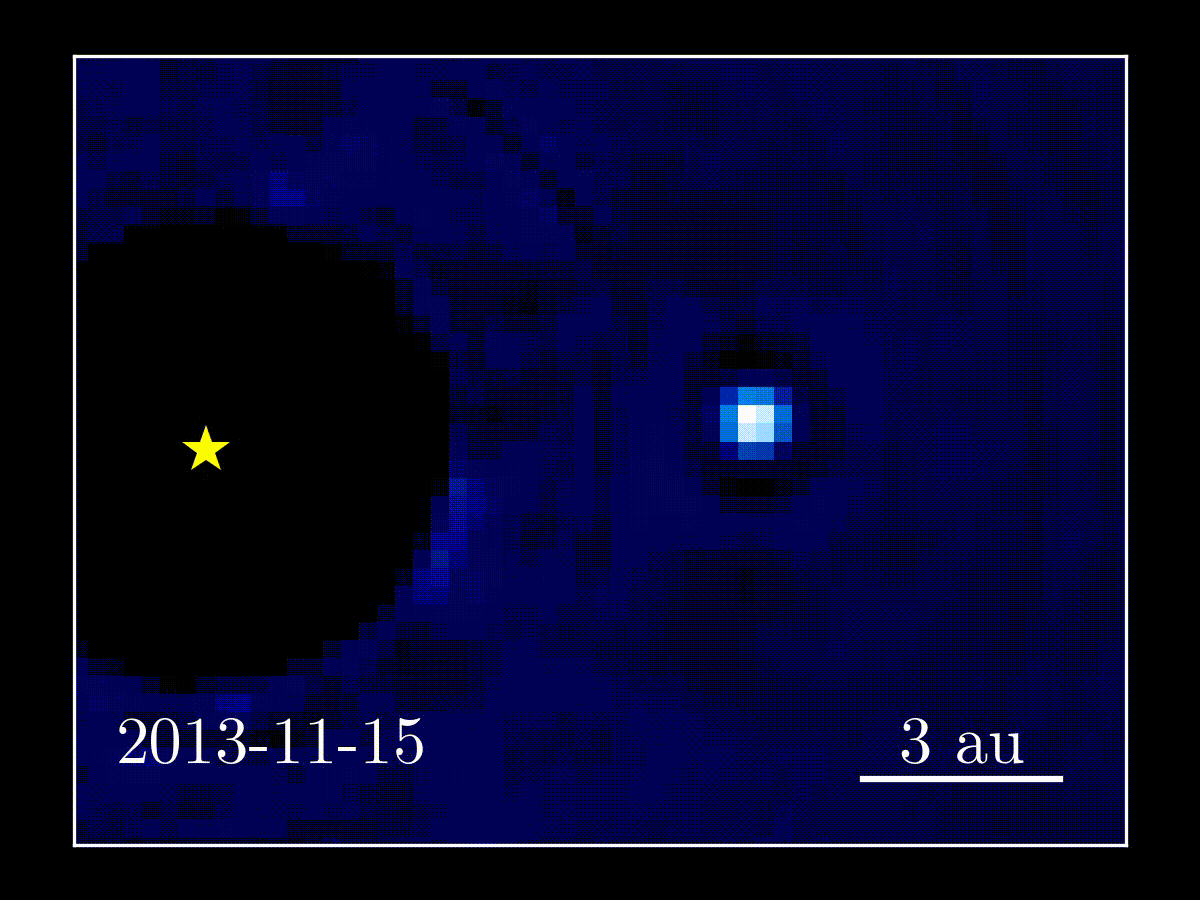Extrasolar Planetary Systems
Dusty debris from extrasolar comets and asteroids
Dusty debris disks or belts exist because comets and asteroids erode over time (mainly through collisions) and deposit huge quantities of fresh dust that orbits a star. The grains are heated by the star and can be detected at infrared wavelengths. Dust grains also reflect light, and typically this appears as a disk-like or ring-like nebulosity surrounding a star.

HR 4796A is a beautiful example of a narrow ring debris disk. From left to right one can clearly see how technological advances offer a dramatically improving image of the system over time. The left image is from HST/NICMOS (Schneider et al. 1998), the middle is from HST/STIS (Schneider et al. 2009) and the far right from GPI (Perrin et al. 2014).
Extrasolar giant planets
With direct imaging we can discover and characterize very massive planets (Jupiter-mass or greater) that orbit the star beyond a few astronomical units or more. For example, the semi-major axis of beta Pic b shown below is 10 au. It’s mass is roughly 11 times that of Jupiter and its age is 24 Myr. So the planets that we discover are relatively young and ultimately reveal how planetary systems form and evolve.

We obtained these images of the exoplanet Beta Pic b in the near-infrared (1.6 microns) with the Gemini Planet Imager over the course of four years (animation credit Jason Wang). The bright star beta Pic is blocked by the circular mask to the left. The planet is moving from right to left because it orbits around the star once every 22 years — these images capture only a fraction of this orbit. The planet’s orbit is edge-on from our perspective, and therefore over time the planet appears to move in a line, even though the true motion is an approximate circle around the star.
Methods
The key challenge is to suppress as much starlight as possible because debris disks and planets are very faint. For example, the star Fomalhaut can be seen with the naked eye (it’s a first magnitude star) but Fomalhaut b is approximately 24th magnitude in the visible (1 billion times fainter than the star). The majority of my science uses the following observatories:
Hubble Space Telescope (HST)
James Webb Space Telescope (JWST)
Gemini Planet Imager (GPI)
Keck Observatory
Atacama Large Millimeter Array (ALMA)